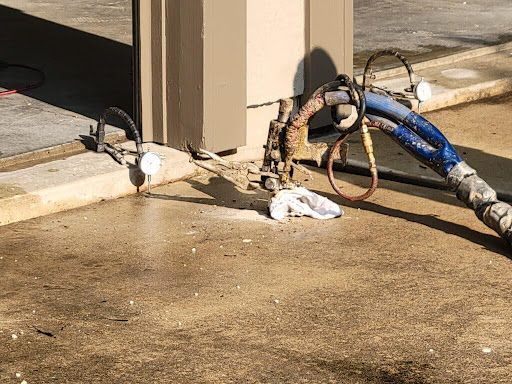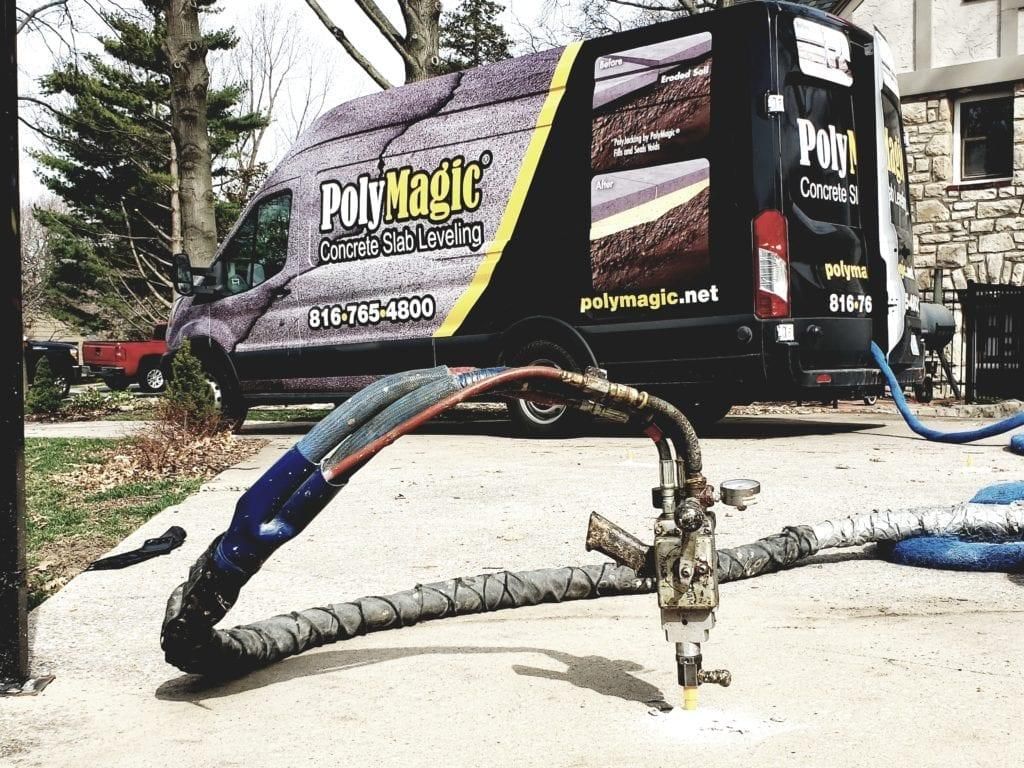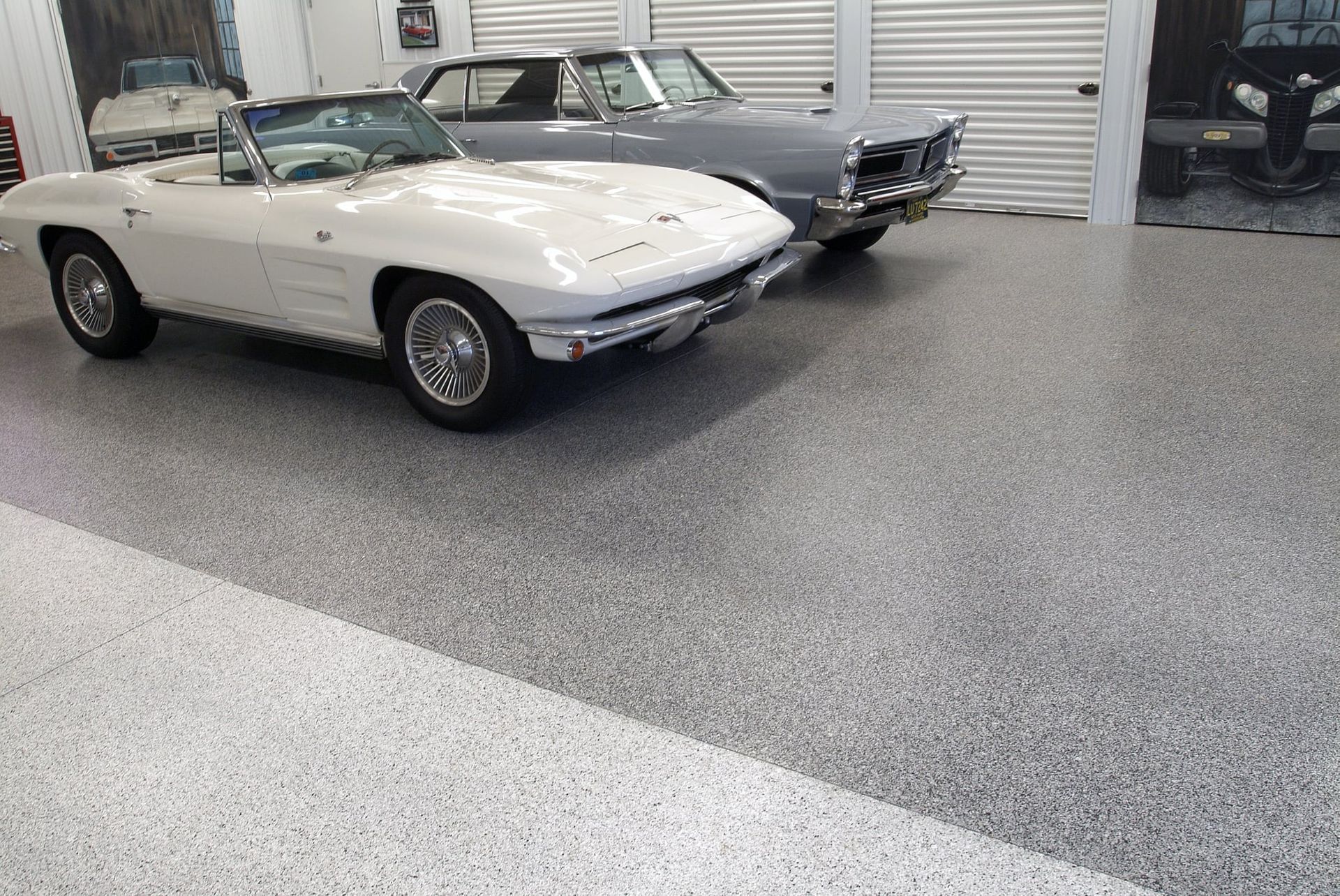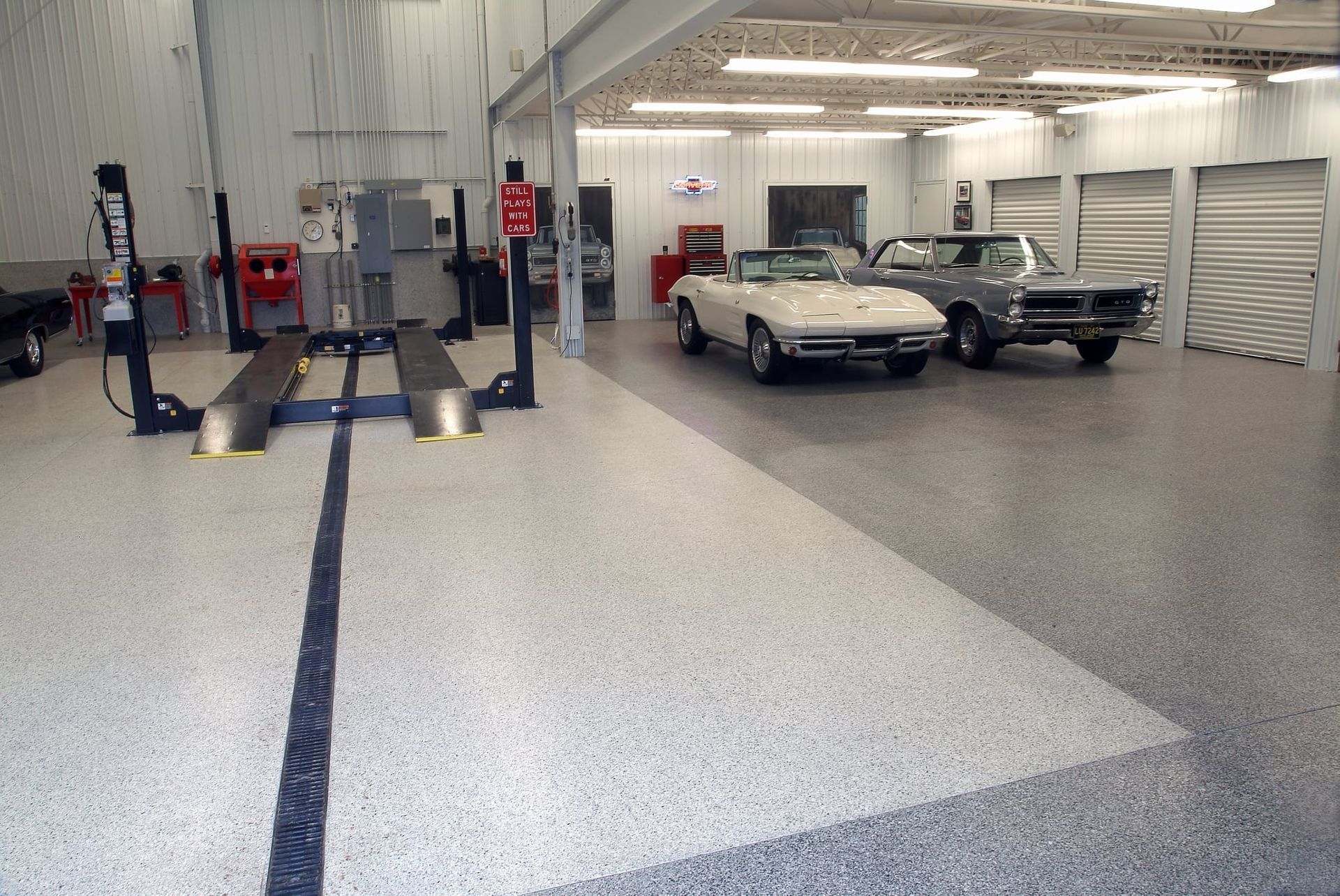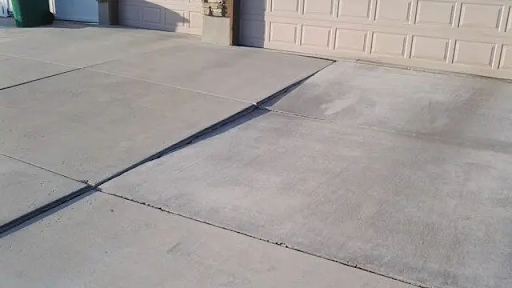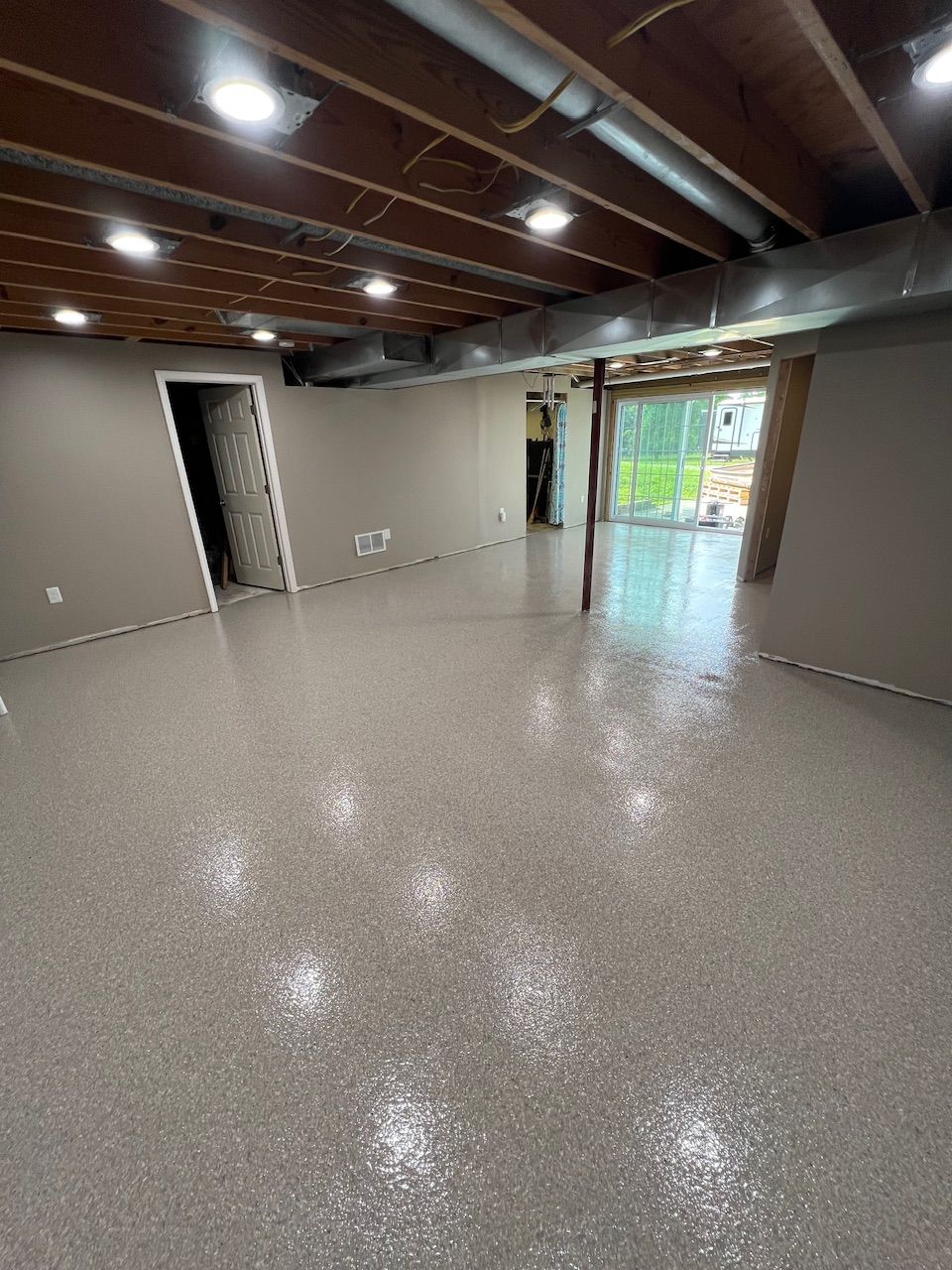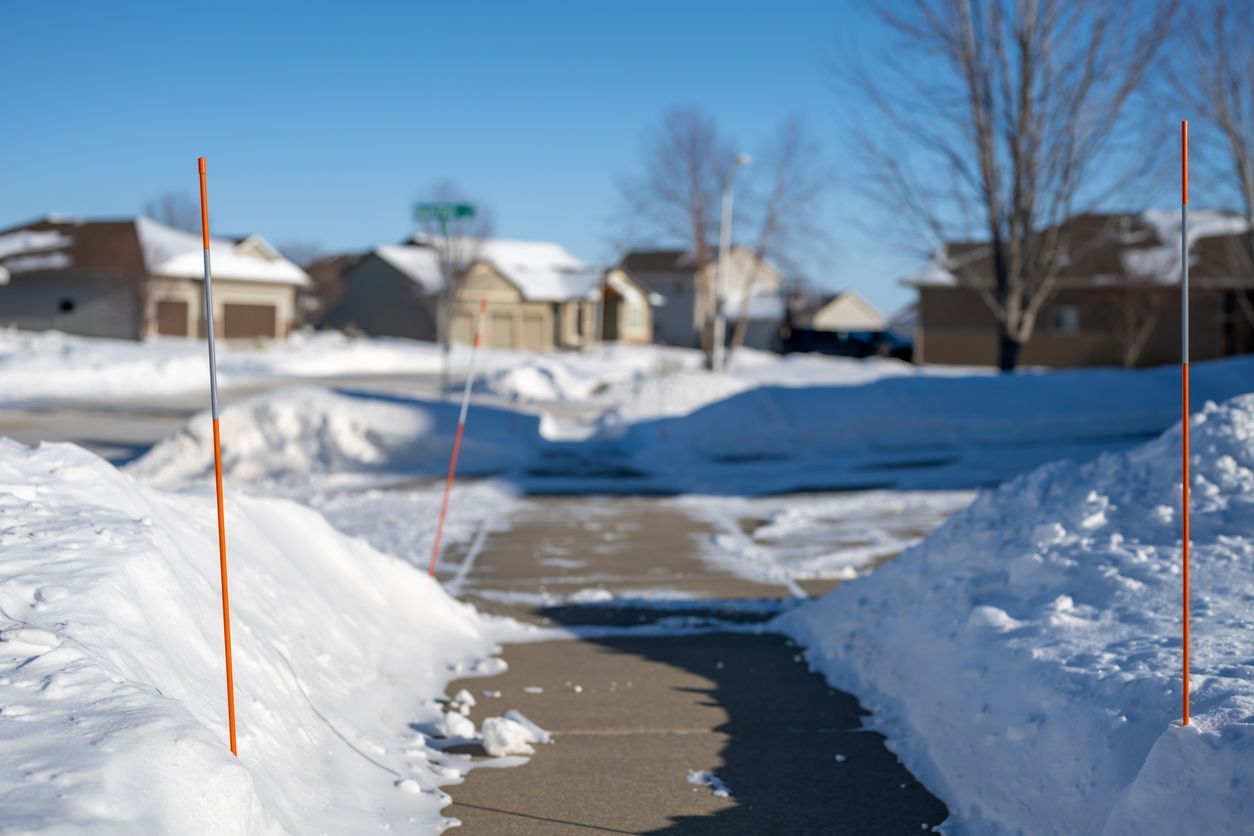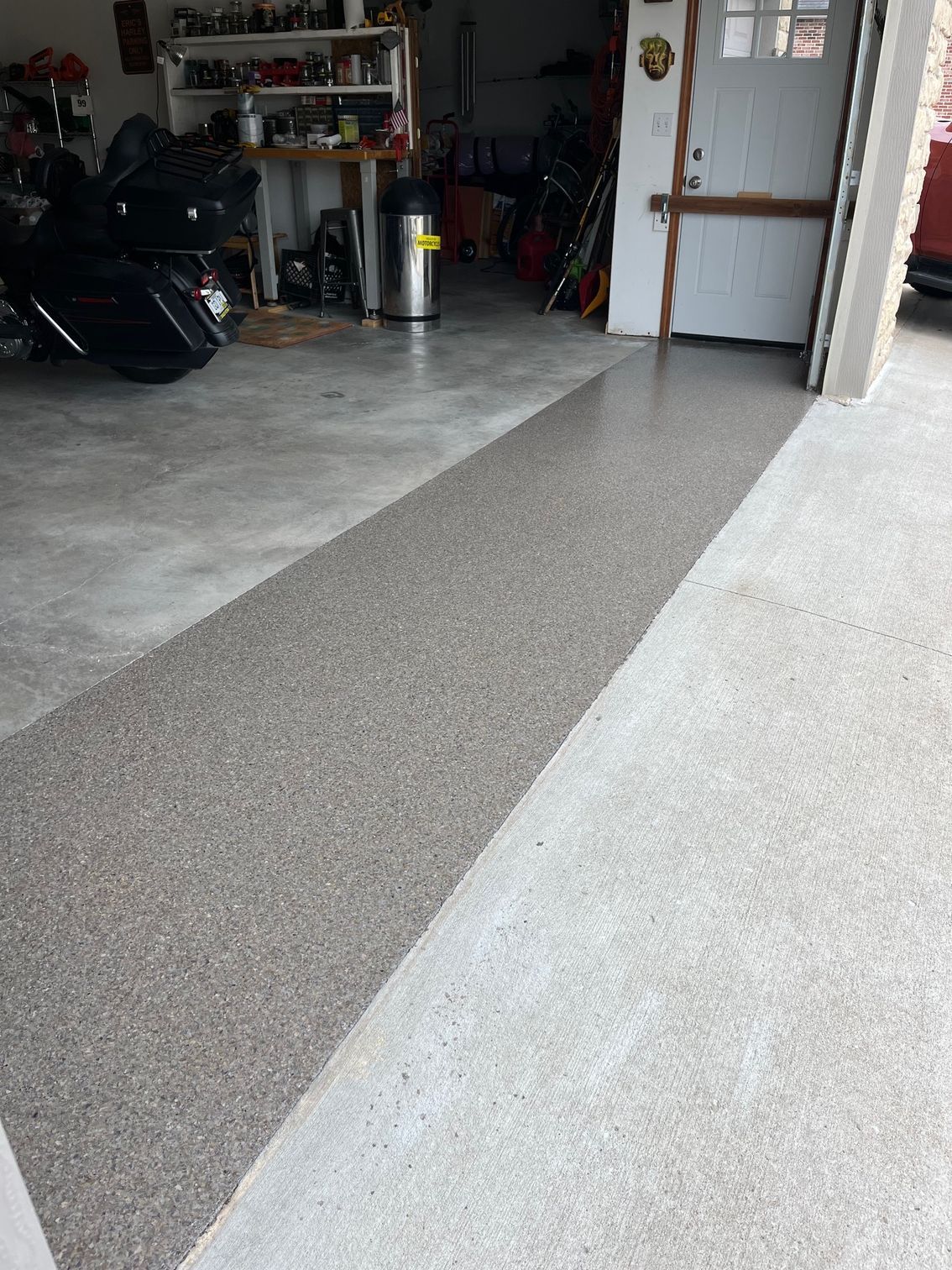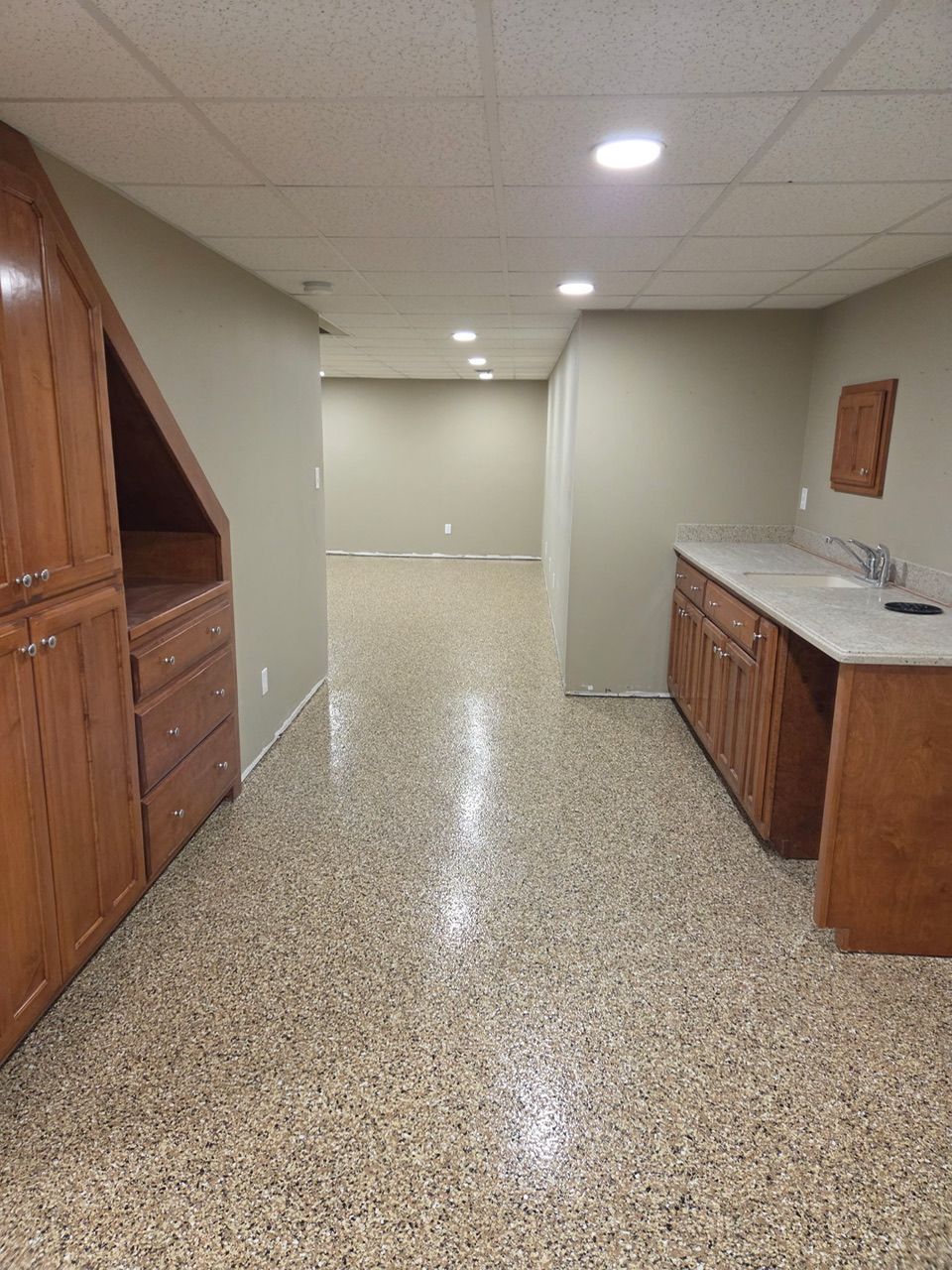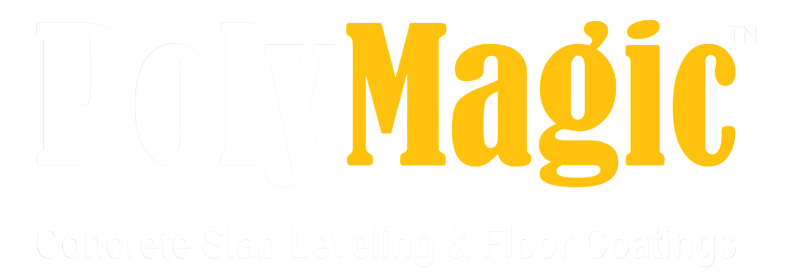Why Concrete Leveling is Better Than Mudjacking
In Kansas City, most homeowners feel unsure about how to repair their sinking or cracked concrete surfaces. With so many options available, it’s hard to know what works best. Many people prefer mudjacking as a traditional and affordable solution but aren’t fully aware of the true advantages of concrete leveling foam.
That’s where the question arises: Is concrete leveling foam better than mudjacking? As a modern alternative, concrete leveling foam offers a reliable, long-lasting solution that can withstand the city’s diverse weather conditions. But what exactly makes it the better choice?
Let’s dive into this comprehensive guide to help you make the best decision for your home’s concrete needs.
Why Concrete Leveling Foam is Better Than Mudjacking
Here are the key reasons why concrete leveling foam is the superior choice for fixing sunken or uneven concrete surfaces:
1. Enhanced Durability
Concrete leveling foam is a high-grade material made from a special polymer blend that doesn’t warp or break down easily. It’s strong, long-lasting, and features robust qualities like high strength, thermal insulation, and acoustic absorption.
The foam resists freeze-thaw cycles, extreme temperatures, and efflorescence, which helps it perform well over long periods. On the other hand, mudjacking is made from a mix of water and soil. Though it contains cement, it is still susceptible to erosion and generally lasts only 2–5 years.

2. FASTER CURING TIME
Concrete foam cures significantly faster than mudjacking. Most foam leveling projects are completed quickly—often within just a few hours. High-quality foam projects typically reach initial cure within 1 hour, and you can walk or drive on the surface immediately after.
In contrast, mudjacking requires 1 to 72 hours to dry. Depending on weather conditions, it may never fully cure. Because it consists of soil, sand, and water, the mixture often absorbs moisture from the ground and the concrete slab itself, slowing the process even more.
3. PRECISION APPLICATION
Mudjacking lacks the precision of foam. It uses a thick mixture of mud and cement that doesn’t spread out as evenly or effectively. When pumped under a slab, it can’t always fill all the empty spaces or voids, leaving gaps that prevent the concrete from lifting evenly—leading to bumps or dips.
Polyurethane foam, by contrast, is lighter and expands more precisely. Once injected under the concrete, it fills all the voids and lifts the slab uniformly.
4. MINIMAL INVASIVENESS
Mudjacking requires larger holes—usually 1 to 2 inches wide—to be drilled into the concrete. These leave noticeable marks, even after patching.
Foam lifting only requires small holes, roughly 3/8 of an inch wide. Once the process is complete, these holes are hardly noticeable. This makes foam leveling far less invasive and much cleaner overall.
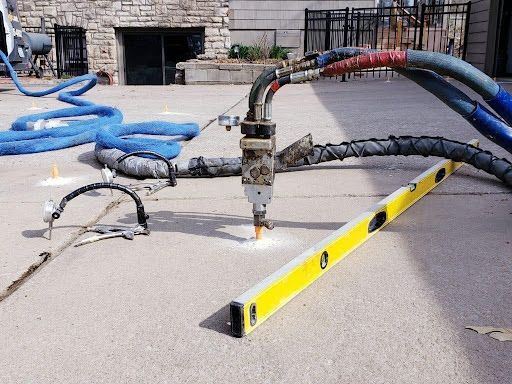
5. PORTABILITY
Concrete leveling foam is applied using compact, mobile equipment. This allows crews to work in hard-to-reach areas like narrow side yards or tight spaces near walls.
Mudjacking usually requires larger machinery that can be difficult to maneuver in confined areas.
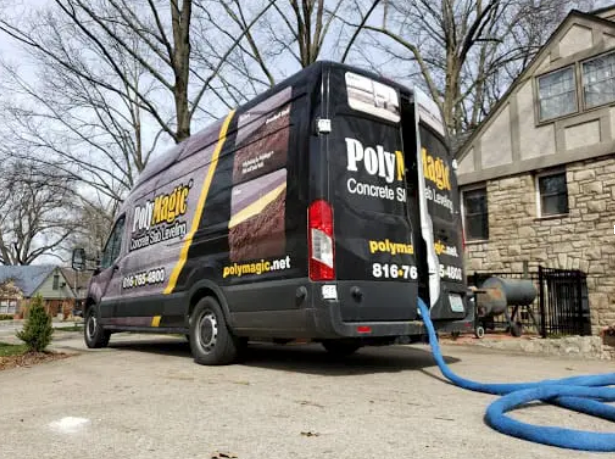
Additional Benefits of Choosing Concrete Leveling Foam Over Mudjacking
Beyond the main advantages listed above, here are a few more benefits of using concrete leveling foam:
I) ECO-FRIENDLY OPTION
While mudjacking uses a mixture of sand, clay, and Portland cement, it consumes a large amount of water and isn’t particularly eco-friendly.
Concrete leveling foam offers a greener alternative. It’s made from a combination of organic and synthetic materials, and about 49% of its content can be recycled. This reduces waste and promotes sustainability. Plus, the production of polyurethane foam emits minimal carbon dioxide—another environmental bonus.
II) MOISTURE RESISTANCE
Concrete foam is waterproof and resists damage when exposed to moisture. This makes it an excellent choice for Kansas City’s climate, where the average annual humidity is around 68%.
Experts at PolyMagic recommend foam for clients who need a durable fix that can handle varying weather conditions.
Mudjacking, however, is vulnerable to heavy rain. The mud mixture can wash away if water pools in the area, causing the slab to sink again.
III) ADVANCED AND PERMANENT SOLUTIONS
Because mudjacking slurry isn’t waterproof and lacks strength, it tends to break down over time. Homeowners often find themselves needing repeat applications, which can be both time-consuming and costly.
Mudjacking slurry also weighs around 100 pounds per cubic foot. That extra weight can put added pressure on the soil underneath, causing further settling.
Developed over 100 years ago, mudjacking is now outdated. Concrete leveling foam is the more advanced solution—it’s lightweight, cost-effective, and performs reliably, even under harsh weather conditions.
MAJOR SIGNS THAT YOU NEED CONCRETE LEVELING FOAM
As a homeowner or business owner, it’s important to monitor your concrete surfaces. By recognizing early warning signs, you can take action and enjoy the benefits of foam leveling—saving time and money in the long run.
Look out for these common signs:
- Uneven or sinking slabs
- Cracks in your concrete
- Pooling water around your home or retaining walls
- Sinking basements, garages, or interior floors
- Misaligned porches or decks
- Warped hardwood floors
- Cracked or sinking tile floors
If you notice any of these issues, act quickly. Concrete leveling foam is a smart, long-lasting solution. It’s stronger than mudjacking, takes less time to install, and gets your surfaces back in use fast.
For more information or a professional evaluation, contact the experts at PolyMagic. With years of experience and a proven process, we’ll provide the best concrete leveling solution for your needs.

